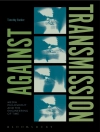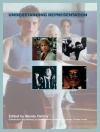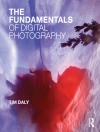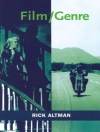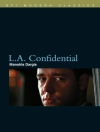In this book, scholars from across the world explore the appearance, portrayal and significance of the suburb on film. By the mid-20th Century, supported by changes in transportation, suburbs became the primary location of entire national populations and films about the suburbs began to concertedly reflect those suburbs’ significance as well as their increasingly lively cultures! Suburbia very soon became filmurbia, as films of the suburbs and those made in the suburbs reflected both the positive and the negative aspects of burgeoning suburban life. Film-makers explored the existences of new suburbanites, their interests, their newly emerging neighbourhood practices, their foibles, their fantasies and their hopes. Whether depicting love, ambition, commerce, family, home or horror, whether traveling to or living in suburban spaces, whether exhibiting beauty, brazenness or brutality, the films of suburbia capture human life in all its diverse guises.
表中的内容
1. Introduction.- 2. ‘Society Stinks’: Suburban Alienation and Violence in the Early Films of Penelope Spheeris – John Taylor, University of Pittsburgh. 3. Dis-locations: Mapping the Banlieue – Julia Dobson, University of Sheffield.- 4. Mike Leigh and the Poetics of English Suburbia – David Forrest, University of Sheffield.- 5. Estate of the Nation: Social Housing as Cultural Verisimilitude ” ros, =” groningen.-=” 9. system=” within=” suburb:=” dharavi=” class=” depiction=” bollywood – sony=” jalarajan=” raj, =” macewan=” university and=” rohini=” sreekumar, =” monash=” university.-=” 10. Outskirts of Reason: the Dream in Días de papel and Chircales – Albert Elduque, University of Reading.- 11. Margins versus Centre: Cinematic Tensions and Conflict between the Suburbs and Paris Janina Schupp, University of Cambridge.- 12. The Suburban Australian Gothic in Lake Mungo and Beautiful – Jonathan Rayner, University of Sheffield.- 13: Claiming the Suburbs: Children and the Children’s Film Foundation in Post-war British Cinema – Matthew Kerry, Nottingham Trent University.- 14. Sides of The Moon: Detroit and Cinema of Proximity – Graeme Harper, Oakland University.- 15: Sirk and Suburbia: Queering the Straightest Space Imaginable – Cody Lang, York University.- 16. ‘I looked for you in my closet tonight’: staging the violence of the Real through ‘candy-colored’ suburban dreamscapes – Rachel Joseph, Trinity University.
关于作者
David Forrest is Lecturer in Film Studies at the University of Sheffield. His research interests are centred on British realist cinema and television drama, with a particular emphases in issues of class, region and nationhood. He is the author of Social Realism: Art, Nationhood and Politics (2013).
Graeme Harper is formerly a Director of Research and now Dean. Based in the USA, he was a panellist at Britain’s Arts and Humanities Research Council (AHRC) from 2003-2014 and at the European Commission, prior to that. A former Commonwealth Scholar in Creative Writing, he is an award-winning fiction writer.
Jonathan Rayner is Reader in Film Studies at the University of Sheffield, School of English. His research interests and publications span Australasian cinema, auteur studies, genre cinema and the interplay of landscapes and moving images. With Julia Dobson, he is co-director of the Sheffield Centre for Research in Film (SCRIF).



